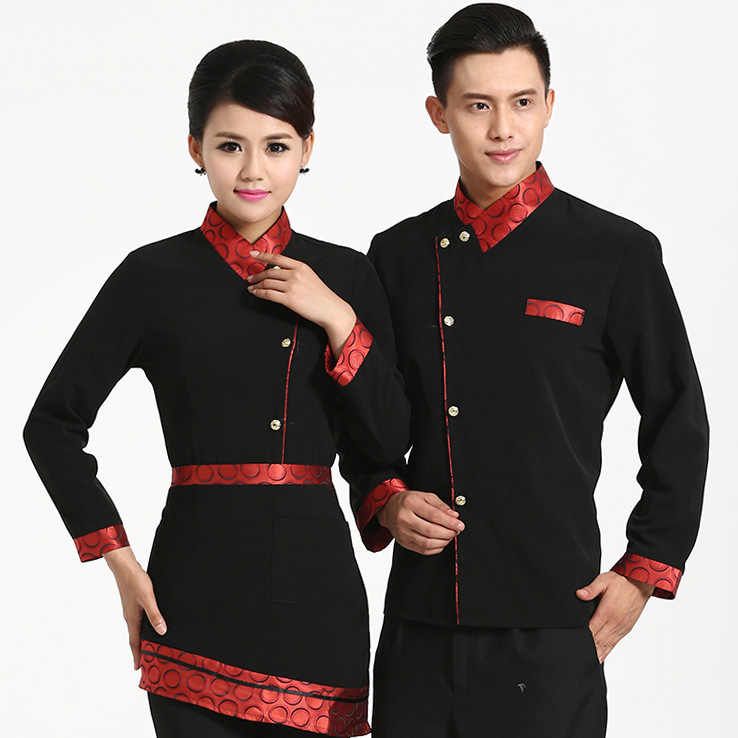Office
#452/8 14th Cross Fathima Layout Nagawara Arabic College
Bangalore , Karnataka
India (560045)

Contact : +919740179468
Restaurant uniforms play a pivotal role in establishing the identity, professionalism, and functionality of dining establishments. These uniforms are more than just clothing; they are a statement of the restaurant’s brand, a tool for improving efficiency, and a means of ensuring hygiene and safety. From fine dining to fast food, the significance of well-designed uniforms cannot be overstated. This essay explores the various aspects of restaurant uniforms, including their importance, design considerations, and the benefits they bring to both employees and customers.
The importance of restaurant uniforms begins with the first impression they create. When customers walk into a restaurant, the uniforms worn by the staff immediately communicate the establishment’s level of professionalism and attention to detail. A well-coordinated and aesthetically pleasing uniform can set the tone for the dining experience, whether it be casual and relaxed or formal and sophisticated. For instance, in a fine dining restaurant, waitstaff in crisp, white shirts, black trousers, and elegant aprons convey an air of elegance and refinement. In contrast, a casual eatery might opt for more relaxed attire, such as branded t-shirts and jeans, to create a laid-back and welcoming atmosphere.
Designing restaurant uniforms involves careful consideration of various factors, including the restaurant’s theme, functionality, and employee comfort. The theme or concept of the restaurant should be reflected in the uniforms. For example, a seafood restaurant might incorporate nautical elements into their uniforms, such as navy blue colors and anchor motifs. Similarly, a Mexican restaurant could feature vibrant colors and traditional patterns to evoke the rich cultural heritage. These thematic elements not only enhance the dining experience but also reinforce the brand identity.
Functionality is another critical aspect of uniform design. Restaurant staff are constantly on the move, performing various tasks that require freedom of movement and comfort. Therefore, uniforms should be made from durable, breathable fabrics that allow for ease of movement and withstand the demands of a busy restaurant environment. Features such as adjustable straps, pockets, and moisture-wicking materials can greatly enhance the practicality of the uniforms. Chefs, for example, need uniforms that protect them from heat and spills while allowing them to move freely around the kitchen. Chef coats made from flame-resistant materials with double-breasted designs are common choices for this purpose.
Employee comfort should not be overlooked when designing restaurant uniforms. Comfortable uniforms can significantly impact the morale and productivity of the staff. Ill-fitting or uncomfortable uniforms can cause discomfort and distraction, leading to decreased efficiency and job satisfaction. On the other hand, well-fitted, comfortable uniforms can boost employee confidence and contribute to a positive working environment. Customizable options, such as different sizes and styles, can ensure that all employees feel comfortable and confident in their attire.
The benefits of restaurant uniforms extend beyond aesthetics and comfort. Uniforms play a crucial role in maintaining hygiene and safety standards. In the food service industry, cleanliness is paramount, and uniforms help to ensure that hygiene protocols are followed. For instance, aprons and chef coats protect the wearer’s clothing from food stains and spills, reducing the risk of cross-contamination. Moreover, specific uniforms for different roles help to delineate responsibilities and maintain order in the restaurant. For example, kitchen staff wear distinct uniforms that are easily distinguishable from those worn by the front-of-house staff, minimizing confusion and promoting a streamlined operation.
Uniforms also foster a sense of unity and team spirit among the staff. When everyone wears the same uniform, it creates a sense of belonging and equality, reinforcing the idea that all employees are part of the same team working towards a common goal. This sense of unity can enhance cooperation and collaboration, leading to a more harmonious and efficient work environment. Additionally, uniforms can instill a sense of pride and professionalism in the staff, motivating them to perform their duties to the best of their abilities.
From a customer perspective, uniforms enhance the overall dining experience. Customers can easily identify staff members, which is particularly important in larger establishments or during busy periods. This visibility ensures that customers can quickly seek assistance when needed, improving customer service and satisfaction. Furthermore, well-dressed staff members contribute to the restaurant’s ambiance and overall aesthetic, making the dining experience more enjoyable and memorable.
In conclusion, restaurant uniforms are a vital component of the dining experience, contributing to the establishment’s identity, functionality, and overall success. Thoughtfully designed uniforms that align with the restaurant’s theme, prioritize functionality and comfort, and uphold hygiene and safety standards can greatly benefit both employees and customers. By investing in high-quality uniforms, restaurants can create a positive first impression, foster a sense of unity among staff, and enhance the overall dining experience, ultimately contributing to the restaurant’s reputation and success.